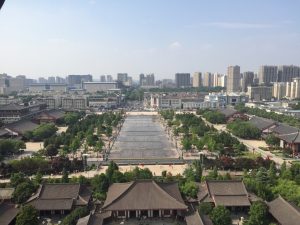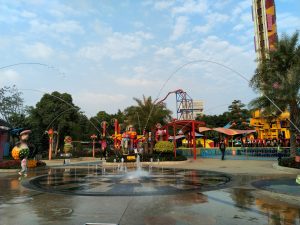 The ChimeLong Tourist Resort is awesome. The tickets for the Grand Circus are expensive and the children need to buy tickets but it is worth seeing! Happy World is suitable for both adults and children. There is an amusement park built for children under 10 years old. Even the little ones who are over 1 year old can find suitable items in the resort, so it is great! Not to mention the zoo, children are not willing to come out when they are playing there! And your trip will be very successful!
The ChimeLong Tourist Resort is awesome. The tickets for the Grand Circus are expensive and the children need to buy tickets but it is worth seeing! Happy World is suitable for both adults and children. There is an amusement park built for children under 10 years old. Even the little ones who are over 1 year old can find suitable items in the resort, so it is great! Not to mention the zoo, children are not willing to come out when they are playing there! And your trip will be very successful!
ChimeLong Tourist Resort is especially suitable for children to play (including the small children), but don’t forget to bring their own trolley, as the trolley here can be rented at 12 o’clock! The cutest animal should be the small koala there. And don’t forget going to the car-taking area to have fun! There is also a need to carefully study the route of the map, do not go the wrong way, and just one day is enough to finish your visit there leisurely! Special reminder: Children are not suitable to go to Luoluji Park.
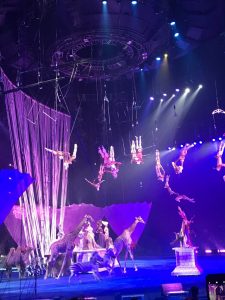
It is not recommended to take the subway when departing from Guangzhou City Railway South Station. At the North Gate Bus Station, you can take the No. 75 bus and take about four or five stations to get off at the Hanxi ChimeLong Station. Then go back a short section and cross the overpass to ChimeLong. The Happy World is so funny, not only you will feel the play there is exciting, but also there are a lot of performances that are also very exciting. And it is especially recommended not to miss the stunt performance, as it is so shocking! And the night performance is beautiful.
It is really a good choice to take your child to have a tour there. The scenic spots in the park are very good, the weather is very good, which is not hot or cold. Remember to bring enough water and you cannot bring food into the resort.

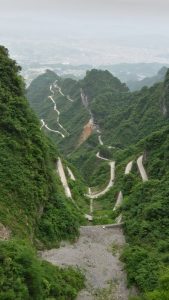 Tianmen Mountain is named after the natural wonder “Tianmen Cave”. When you visit Tianmen Mountain, you must take the 7500-meter cableway. You can enjoy the view of the Tongtian Avenue and the mountains hovering between the cliffs in the cable car. If you are brave, you can take a walk on the glass path that is suspended from the wall and experience the thrill of volley walking.
Tianmen Mountain is named after the natural wonder “Tianmen Cave”. When you visit Tianmen Mountain, you must take the 7500-meter cableway. You can enjoy the view of the Tongtian Avenue and the mountains hovering between the cliffs in the cable car. If you are brave, you can take a walk on the glass path that is suspended from the wall and experience the thrill of volley walking.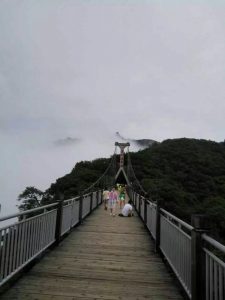 The core attraction of the center line is the Tianmenshan Temple, and there is a “Qier Cave” near the temple. The folklore sends a goddess of Guanyin here, and wishes to ask for children; the highlight of the west line is a 60-meter-long “glass plank road” built on the cliffs, the roads under the feet are all made of transparent glass. Walking on top, you can see the deep valley under your feet. You will feel the joy of walking in the air. The east line is dominated by virgin forests, and now it is also 150 meters long glass plank road.
The core attraction of the center line is the Tianmenshan Temple, and there is a “Qier Cave” near the temple. The folklore sends a goddess of Guanyin here, and wishes to ask for children; the highlight of the west line is a 60-meter-long “glass plank road” built on the cliffs, the roads under the feet are all made of transparent glass. Walking on top, you can see the deep valley under your feet. You will feel the joy of walking in the air. The east line is dominated by virgin forests, and now it is also 150 meters long glass plank road.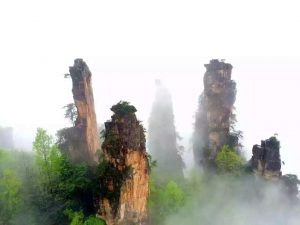 Every trip will be surprising or amazing, and has its own different posture, and we are all unknown to it, and we are full of expectations. For the Zhangjiajie National Forest Park, the whole stream runs through the valley between the peaks. It is quiet and unusual. The stream is as clean as a mirror. The small fish swims among them. Occasionally, you can see the little monkey standing on the side of the road. The flowers and plants by the stream are delicious, and the birds there are singing, which will make you feel walking in the middle of the painting.
Every trip will be surprising or amazing, and has its own different posture, and we are all unknown to it, and we are full of expectations. For the Zhangjiajie National Forest Park, the whole stream runs through the valley between the peaks. It is quiet and unusual. The stream is as clean as a mirror. The small fish swims among them. Occasionally, you can see the little monkey standing on the side of the road. The flowers and plants by the stream are delicious, and the birds there are singing, which will make you feel walking in the middle of the painting.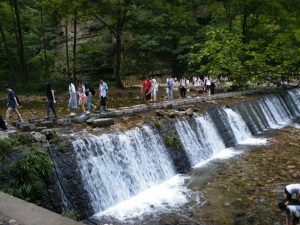
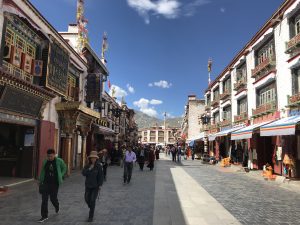 Barkhor Street is a street that shows the Tibetan customs. Here you can feel the customs of the Tibetan area, and it is mainly surrounded by shops and restaurants around the Jokhang Temple and the places where you can manage all kinds of small objects. Here what you will feel more is the devout worship of the Tibetans, and the shops on both sides are for sale the decorations that feature a variety of Tibetan style. Walking in a clockwise direction, you will find several exits that can be reached in different directions to the city of Lhasa. The transportation in all directions makes the Barkhor Street the busiest and bustling street.
Barkhor Street is a street that shows the Tibetan customs. Here you can feel the customs of the Tibetan area, and it is mainly surrounded by shops and restaurants around the Jokhang Temple and the places where you can manage all kinds of small objects. Here what you will feel more is the devout worship of the Tibetans, and the shops on both sides are for sale the decorations that feature a variety of Tibetan style. Walking in a clockwise direction, you will find several exits that can be reached in different directions to the city of Lhasa. The transportation in all directions makes the Barkhor Street the busiest and bustling street. Of course, here you can also buy some favorite Tibetan style ornaments, turquoise, Nanjiang carnelian, Dzi Beads, etc., all of ornaments showing the beauty of Tibet can be almost found here, if you have patience, you can have a good chat with the owner, and the price will be very acceptable too.
Of course, here you can also buy some favorite Tibetan style ornaments, turquoise, Nanjiang carnelian, Dzi Beads, etc., all of ornaments showing the beauty of Tibet can be almost found here, if you have patience, you can have a good chat with the owner, and the price will be very acceptable too. The Jokhang Temple, in Tibetan language is called “Jingkang”, and it is the end of the pilgrimage of Tibetan Buddhist believers. The sacredness of the Jokhang Temple is not inferior to the Potala Palace.
The Jokhang Temple, in Tibetan language is called “Jingkang”, and it is the end of the pilgrimage of Tibetan Buddhist believers. The sacredness of the Jokhang Temple is not inferior to the Potala Palace.
 Drepung Monastery is the largest and highest-ranking temple in the Gelug Sect of Tibetan Buddhism and the largest temple in the world. The white buildings are covered with hillsides, and looking from the distance, it is like a huge pile of rice. There are some well-known buildings in the temple, including “Gandanpozhang”, “Cuoqin Hall”, and the four “Zhacang” and the affiliated Kangcun. In addition, the “Tibet’s Largest Kitchen” next to the Cuoqin Hall served as a task for more than 10,000 monks to cook and make tea during their heyday. What you can’t miss in the Drepung Monastery is a large-scale debate ceremony every afternoon. The squatting people are in groups of two, one sits on the ground, the other stands on the opposite side, and the verses are debated in exaggerated movements. The scene is very interesting. Every year at the Sho Dun Festival, Drepung Monastery holds the largest buddha ritual in the Tibetan area, displaying a giant Buddha image Thangka on the hillside, attracting a large number of believers and tourists to pray, whose scene is very spectacular.
Drepung Monastery is the largest and highest-ranking temple in the Gelug Sect of Tibetan Buddhism and the largest temple in the world. The white buildings are covered with hillsides, and looking from the distance, it is like a huge pile of rice. There are some well-known buildings in the temple, including “Gandanpozhang”, “Cuoqin Hall”, and the four “Zhacang” and the affiliated Kangcun. In addition, the “Tibet’s Largest Kitchen” next to the Cuoqin Hall served as a task for more than 10,000 monks to cook and make tea during their heyday. What you can’t miss in the Drepung Monastery is a large-scale debate ceremony every afternoon. The squatting people are in groups of two, one sits on the ground, the other stands on the opposite side, and the verses are debated in exaggerated movements. The scene is very interesting. Every year at the Sho Dun Festival, Drepung Monastery holds the largest buddha ritual in the Tibetan area, displaying a giant Buddha image Thangka on the hillside, attracting a large number of believers and tourists to pray, whose scene is very spectacular.
 Shanghai’s birthplace – Shanghai Old Street, is not very long, and the end of the street is the City God Temple. It is hard to imagine that Shanghai, an international metropolis, has developed here. There is still a distance between Suzhou and Huangpu River.
Shanghai’s birthplace – Shanghai Old Street, is not very long, and the end of the street is the City God Temple. It is hard to imagine that Shanghai, an international metropolis, has developed here. There is still a distance between Suzhou and Huangpu River.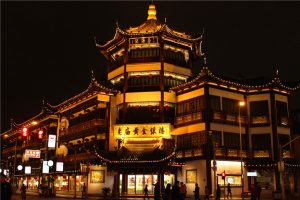 Shanghai Old Street is relatively quiet in the setting sun. In the busy Shanghai, it is more suitable for people to live in the Shanghai Old Street. The building is very characteristic, and it is relatively close to the city god temple, where the old temple gold and silver building is very famous, and you can go shopping there!
Shanghai Old Street is relatively quiet in the setting sun. In the busy Shanghai, it is more suitable for people to live in the Shanghai Old Street. The building is very characteristic, and it is relatively close to the city god temple, where the old temple gold and silver building is very famous, and you can go shopping there!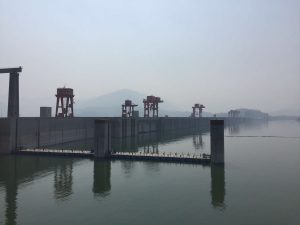 It is interesting to see the boat passing the Gezhou dam and experience the feeling of crossing the dam after the boat rises. Then the beautiful scenery of Xiling Gorge come into view, and the boat arrives at the Three Gorges Dam for three hours. The dam scenic area can be seen from all angles to the five-level river lock and the spectacular dam.
It is interesting to see the boat passing the Gezhou dam and experience the feeling of crossing the dam after the boat rises. Then the beautiful scenery of Xiling Gorge come into view, and the boat arrives at the Three Gorges Dam for three hours. The dam scenic area can be seen from all angles to the five-level river lock and the spectacular dam.
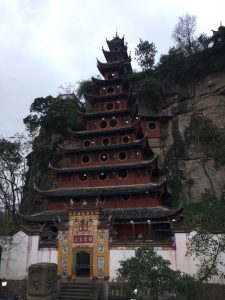 Shibaozhai, a historic wooden structure with unique style and beautiful scenery, is the world’s largest bonsai with its unique scenery. Shibaozhai is a free spot in the Yangtze River Three Gorges cruise trip. If you go there by yourself, the ticket is 50 yuan per person. Located in the north bank of the Yangtze River in Zhongxian County, Chongqing, Shibaozhai has many patriots and generals. Bai Juyi has also been here. Shibaozhai is featuring loyalty culture.
Shibaozhai, a historic wooden structure with unique style and beautiful scenery, is the world’s largest bonsai with its unique scenery. Shibaozhai is a free spot in the Yangtze River Three Gorges cruise trip. If you go there by yourself, the ticket is 50 yuan per person. Located in the north bank of the Yangtze River in Zhongxian County, Chongqing, Shibaozhai has many patriots and generals. Bai Juyi has also been here. Shibaozhai is featuring loyalty culture.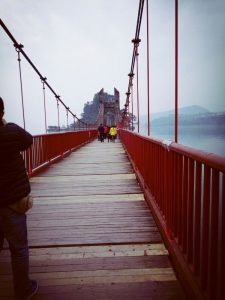 Don’t go with the guide after you get on the pier, as the tour guide will take you to the commercial street and then to the attraction. After going to the dock, look at which side of the sedan chair to go, and following that road is the best and the fastest. This village is very characteristic. It doesn’t use a nail. It all hangs on the cliff by the fit of the wood. It feels very thrilling when climbing up Shibaozhai.
Don’t go with the guide after you get on the pier, as the tour guide will take you to the commercial street and then to the attraction. After going to the dock, look at which side of the sedan chair to go, and following that road is the best and the fastest. This village is very characteristic. It doesn’t use a nail. It all hangs on the cliff by the fit of the wood. It feels very thrilling when climbing up Shibaozhai.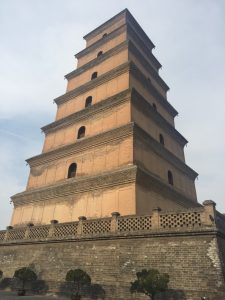 It is a historical value to come to Xi’an to have a visit to the Big Wild Goose Pagoda. The Confucian classics took back by Xuanzang were collected in the Big Wild Goose Pagoda in the same year, but the scriptures of the year were written on a kind of leaf. Now only nine pieces are kept, which has the national treasure level. It is recommended not to go to the Big Wild Goose Pagoda during the peak season, and there are very few people in the off-season, which it is better to have a visit there. The Big Wild Goose Pagoda in the sunset is still beautiful and fantastic, showing the style of the Tang Dynasty. There is Asia’s largest musical fountain. It is recommended to have a walk there at night, the fountain at the bottom features vivid color, and it is bright and beautiful.
It is a historical value to come to Xi’an to have a visit to the Big Wild Goose Pagoda. The Confucian classics took back by Xuanzang were collected in the Big Wild Goose Pagoda in the same year, but the scriptures of the year were written on a kind of leaf. Now only nine pieces are kept, which has the national treasure level. It is recommended not to go to the Big Wild Goose Pagoda during the peak season, and there are very few people in the off-season, which it is better to have a visit there. The Big Wild Goose Pagoda in the sunset is still beautiful and fantastic, showing the style of the Tang Dynasty. There is Asia’s largest musical fountain. It is recommended to have a walk there at night, the fountain at the bottom features vivid color, and it is bright and beautiful.